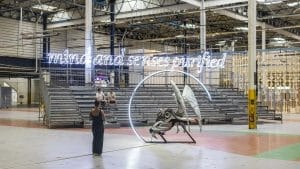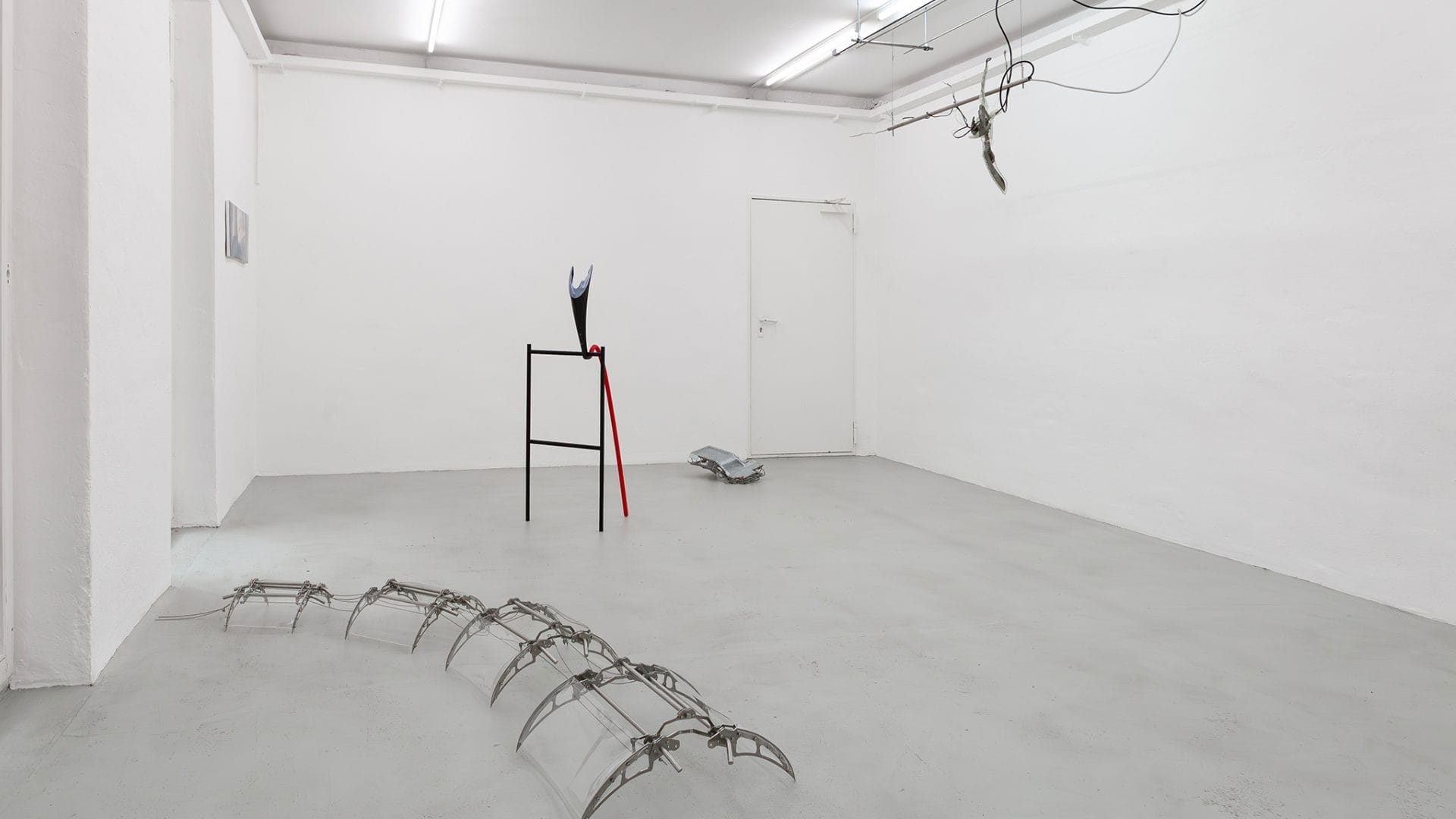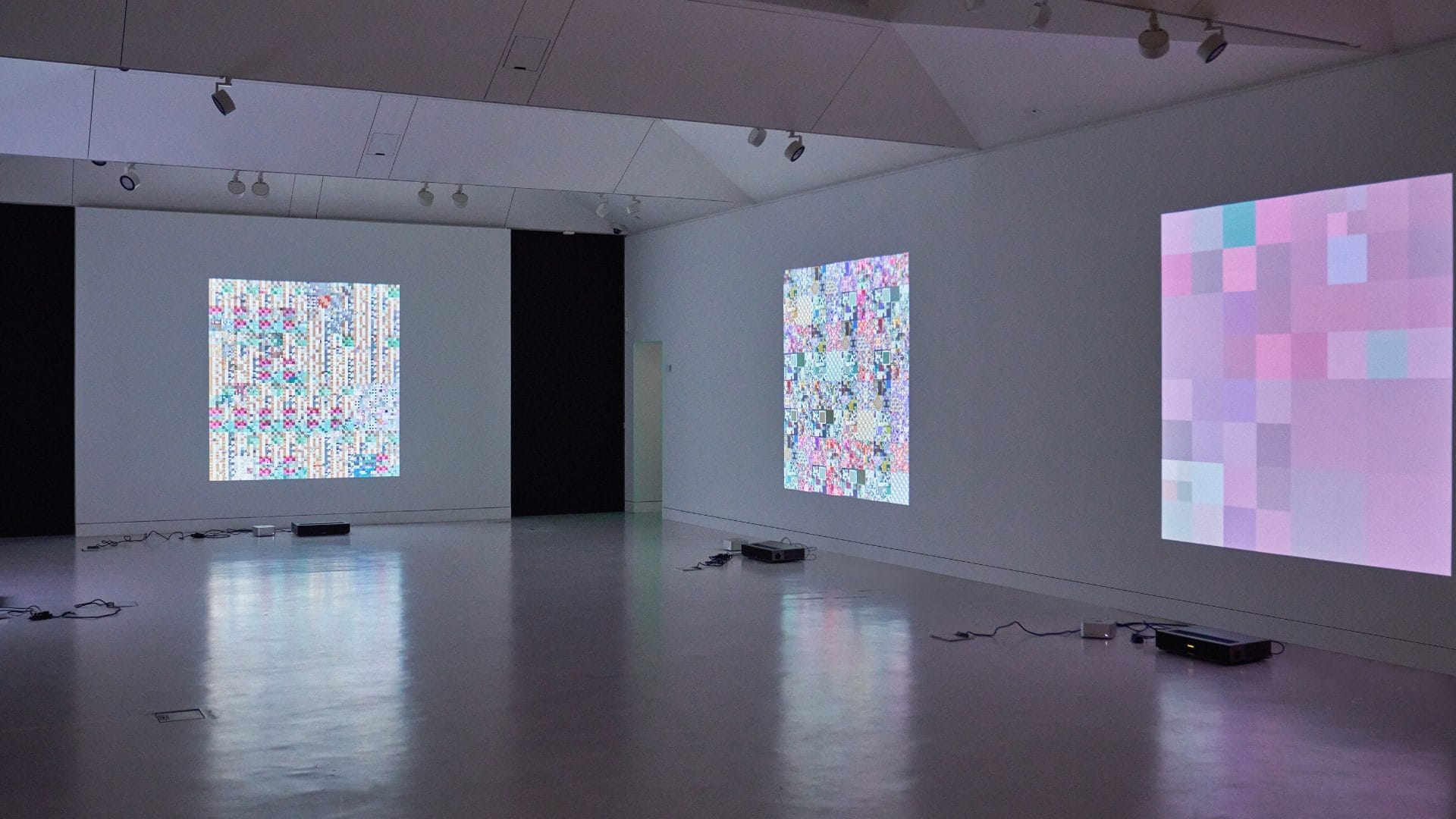
Fakewhale in Conversation with Johannes Thiel
Johannes Thiel navigates through a variety of media and techniques, his work standing out due to the use of unconventional materials such as silicone and aluminum, as well as the employment of pneumatic mechanics to animate his sculptures and installations. His creations explore complex visual narratives that reflect his deep understanding of visual communication and technology, placing a particular emphasis on the concept of the “shield” as a metaphor for protection and adaptation. In this brief interview, Fakewhale has decided to engage in a conversation with Johannes to explore and share intriguing aspects of his work.
1. If you had to choose three comprehensive adjectives to describe your work, which words would you pick?
I would describe my work as distinct, futuristic, and organic.
2. In your “Post SHIELD” project, the use of silicone forms and shield-inspired structures is particularly intriguing. How does this material choice integrate with the overall concept of the work? Could you also describe the creative process behind choosing materials like silicone and aluminum for your sculptures?
Utilizing a specific type of soft silicone for the “soft robot” is essential for its mobility. Employing casting from 3D printed forms allows for a seamless transition from digital files to physical materiality, tailored to fulfill specific functions within the project.
3. I’ve noticed that pneumatic mechanics play a crucial role in animating your “soft robot.” This mechanism seems to bring the artwork to life, giving it a breath of life. What motivated you to incorporate elements of automation and movement into your works, especially in “Post SHIELD”?
The incorporation of pneumatic mechanics in animating the “soft robot” was driven by a desire to infuse the artwork with vitality and movement. By integrating elements of automation, the sculptures transcend static forms, inviting viewers to engage with the evolving narrative of resilience and adaptation.

4. The visual aspect of your work is very direct and detailed, with a particular emphasis on the interaction between light and structure. How does the lighting component contribute to the public’s perception and interpretation of your work?
Lighting plays a pivotal role in enhancing the visual experience of my work. By accentuating the interplay between light and structure, it creates dynamic shadows and highlights, drawing attention to details and visualizing the research environment within the installations.
5. How does your background in visual communication help you shape the visual narratives in your art works?
There are significant parallels between approaching design tasks and creating artworks. Both involve composition and structure, whether it’s dividing a page for a poster or organizing installations with multiple pieces to create a cohesive visual narrative.

6. Can you discuss how you see the evolution of the concept of “shield” in the context of future practical or theoretical applications?
In “Post SHIELD,” the concept of “shield” extends beyond traditional connotations of protection to encompass themes of adaptation and symbiosis. Future applications could explore areas such as bioengineering and human-machine interaction.
7. What is the importance of interactivity in your installations, and how do you foresee it influencing your future projects?
While interactivity is not currently a feature of my installations, it remains a potential avenue for future exploration.

8. Looking to the future, are you involved in any new projects or artistic directions you aim to explore? Could you share some details about the projects you are currently working on or the themes you are interested in exploring in your future works?
Currently, I am exploring new projects that delve into themes of human-machine coexistence and hyper-optimized technological innovation. Additionally, I’m working on a project centered around encoding messages and decoding visualizations in the context of sound.
Johannes Thiel (*1999, Germany) is an artist and designer working in a variety of media, from sculptures and installations to digital works in sound, graphics and renderings. His interests range from computer-generated organic forms and futurisitc bodies to rigid technical constructions. Johannes is currently studying Visual Communication at the University of the Arts, and currently lives and works in Berlin.
fakewhale
Founded in 2021, Fakewhale advocates the digital art market's evolution. Viewing NFT technology as a container for art, and leveraging the expansive scope of digital culture, Fakewhale strives to shape a new ecosystem in which art and technology become the starting point, rather than the final destination.
You may also like
The Neoliberal Urge to Curate a Friendsgroup at ACUD Galerie, Berlin
The Neoliberal Urge to Curate a Friendsgroup by Sarah Albrecht, Oliver Bleckmann, Manuel Cornelius,
Fakewhale STUDIO: A New Imaginary
Every work, every action, and every word we express are the products of accumulated knowledge and pa
Curating Tomorrow: Verse’s Vision for the Future of Contemporary Art
We are excited to announce that Fakewhale will be one of the selected galleries active in the Verse






